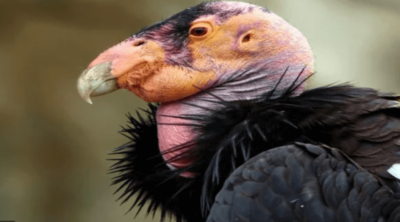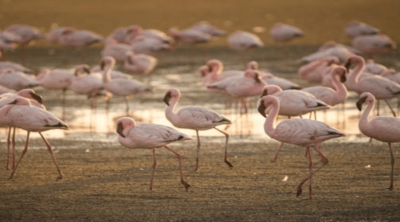
Who would have imagined the high flying bird and the sunbathing reptile to have a common ancestor? This article sheds light on the characteristics that these two distinctly different creatures share.
We all are aware that reptiles and birds are a part of the animal kingdom. But many of us are not familiar with the theory which states that birds evolved from reptiles, leading them to share quite a few features. Believed to be descendents of the dinosaurs, there are several characteristics which are common to both, birds and reptiles. It was in 1868, that biologist Thomas Huxley came up with the theory that established a link between modern-day avian creatures and dinosaurs. This sparked off a new line of thought among paleontologists, as an analysis of certain fossils lent credence to Huxley’s theory. He conducted a study on the skeletal structure of a theropod dinosaur, the Compsognathus, and the Archaeopteryx lithographica, which was the earliest specimen of a bird. He managed to show that the Archaeopteryx had quite a few features in common with the Compsognathus, the most significant being the presence of feathers.
As with all discoveries, this theory has its fair share of counterattacks. There are scientists who are of the view that birds have evolved from archosaurs, a group of diapsid amniotes, whose present day descendents include crocodiles. Similarities between birds and reptiles are the result of convergent evolution, wherein different organisms evolve similar anatomical structures on their own. However, with the discovery of feathered theropod fossils, the acceptance tilted in favor of Huxley’s theory of theropods being the ancestry of birds. The similarities mentioned here are in accordance with this theory.
Similarities Between Birds and Reptiles
| Feature | Birds | Reptiles | Verdict |
| Oviparous | Birds, as we all know, lay eggs outside their body. The cloaca orifice, which performs dual duties of excretion and reproduction, are present in both. | Reptiles are oviparous too. In fact, the amniotic egg shells are common to both species. |
Exception! Egg shells of birds are quite hard, whereas those of reptiles are leathery to touch. |
| Scales | Though a bird’s body is covered with feathers, they have scales on their legs and feet. Their beaks and claws have scales too. | Scales in reptiles perform various functions that are vital to their survival. |
The scales in both, birds and reptiles are made of beta-keratin, that make them significantly tougher. |
| Skeletal Structure | The single occipital condyle, which is at the base of the skull, joins the neck to the body and is present in reptiles as well. In case of birds, it allows them to rotate their necks as much as 270 degrees. | The five fused bones that form the jaw and the single middle ear bone are also present in both. The nucleated blood cell structure is another shared feature. | Exception! As birds are airborne, their bones are hollow, therefore lighter, as against the bones of reptiles which are dense and heavy. |
| Ancestry | Birds have evolved from theropod dinosaurs, during the Jurassic era. Birds are believed to be survivors of the Cretaceous-Paleogene extinction event. They belong to: Kingdom Animalia; Phylum Chordata. | Theropod dinosaurs were reptiles with three-toed feet, they used to incubate their eggs, and had hollow bones. Reptiles belong to: Kingdom Animalia; Phylum Chordata. | The evidences indicating shared ancestry of birds and reptiles have been considerably conclusive. |
Differences Between Birds and Reptiles
| Feature | Birds | Reptiles |
| Heart | A bird’s heart has four chambers. |
Reptiles have a three-chambered heart. The only exception is the crocodile, which is the reptile that has a four-chambered heart, similar to a bird’s. This feature stands in favor of the archosaurs’ theory. |
| Bones | Hollow, pneumatic bones enable birds to fly. | Reptiles, being land-dwellers, have heavy bones. |
| Mouth | Birds have a light beak, with no teeth. | The jaws of reptiles are very heavy, with the presence of teeth. |
| Metabolism | The most significant difference is that birds are endothermic or warm-blooded. The food that they consume is converted to energy. | Reptiles are ectothermic or cold-blooded. They need to absorb heat from an outside source. |
Evolutionary biology is a diverse science that never fails to amaze us. As further evidences unearth more facts about reptiles, scientists will attempt to answer several questions about different organisms and how they came into being as they are today. Whether the mystery of bird evolution gets revealed or not needs to be seen.


